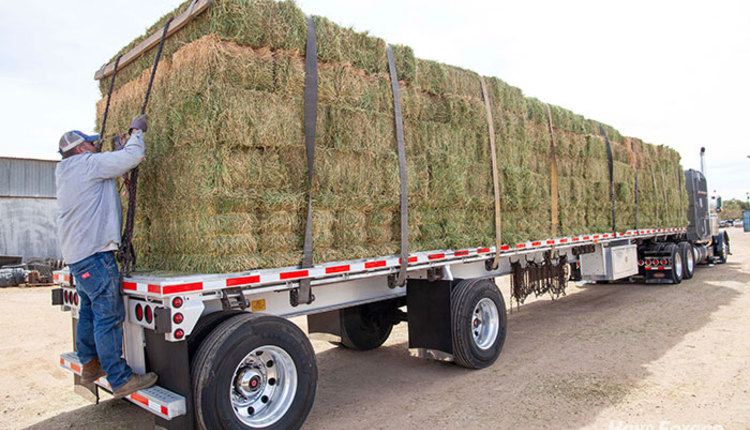Hay season shifts to selling and buying |
| By Mike Rankin, Managing Editor |
|
|
 With haymaking activities ceased on most farms and bales tucked away in sheds or under tarps, attention now turns to machinery maintenance and hay marketing. Selling hay is unlike moving most other agricultural commodities. There is no commodity exchange or posted price at the local co-op. It’s an activity that is sometimes fraught with risk but can also be rewarding and lucrative. Successful hay marketers who deal directly with their clients learn quickly that trust and honesty in the buyer-seller relationship is of the utmost importance. Although some buyers will demand a forage quality test and pay accordingly, there are still many others who neither want nor have the knowledge to decipher the laundry list of metrics on a forage analysis report. Rather, this latter group relies on sensory evaluation, using sight, smell, and touch either before or after the sale. Given this reality, sensory evaluation on the seller’s end must be aligned with that of the buyer. This makes for a challenging situation until the buyer and seller develop a long-term relationship and expectations are understood. Most hay buyers don’t react favorably when they receive a load of hay that wasn’t well represented during a phone call or in an advertisement. The stakes are even higher when hay prices are historically high. Many successful sellers will guarantee their product. If the customer isn’t happy, amends are made by either substituting different hay or with a price adjustment, if it’s appropriate. Still, it’s never a good situation to have a load of hay rejected after having trucked it several hundred miles. For many hay producers, dealing directly with the end user isn’t worth the hassle and frustration. Instead, they prefer to market everything through a broker. Even when using a broker, an honest assessment of the product is needed unless the broker prefers to assess the hay themselves. Goes both ways Although honesty on the hay seller’s side is paramount, the same is true on the buyer’s end. Getting “hung” with a bad check or no check for a hay sale is something that many haymakers have experienced at least once. Whenever the topic is broached on an internet forum or social media site, the replies of personal experiences are many. Whenever hay is delivered with only a promise of payment, the producer is put in the unenviable position of an unsecured creditor. This is always a position of risk and one that should be avoided. The best-case scenario after receiving a bad check is that an honest mistake was made, and the problem is quickly resolved. Unfortunately, this doesn’t always happen. Taking legal action may be an option, but it’s one that most producers want to avoid as costs can mount to more than the value of the claim. Hay producers who have experienced nonpayment on several occasions have gone to the extreme of only dealing with buyers whom they know and trust. This, however, limits the potential client pool. Another method to ensure payment is to deal only in cash or a cashier’s check. Hay is not loaded (or unloaded) until payment is received. In cases of payment by personal check, this means the check must clear the bank before the hay is loaded at the farm or delivered. Of course, this latter approach puts an elevated burden on the seller to represent the product honestly. Some hay sellers have turned to technology and utilize a credit card reader that attaches to their tablet or cellphone. This puts the onus of collection on the credit card company but comes with a user fee that may or may not be passed on to the hay buyer. Watch for hay scams Hay sellers also need to be on the lookout for scammers. Unfortunately, this has become easier and more common in the industry. Many scams originate from outside of the U.S., though not exclusively. Here are some of the indicators of potential hay scams that have been documented from past experiences: • Initial contact is made by text message or email, and the buyer is hesitant to speak by phone. • The buyer offers payment by cashier’s check or money order. • The buyer insists on paying more than you’re asking but requests that you send the difference back to them or pay the trucker. • Emails or text message inquiries contain poor spelling and odd word choices. • The buyer doesn’t inquire about the type or quality of the hay. • The buyer has an unusual name or email address. Often, scammers acquire a hay seller’s contact information from an advertisement or internet hay sellers’ list. When a hay scam is suspected, the best thing to do is contact your state’s Department of Agriculture and/or the local sheriff’s office. Hay theft In areas of drought coupled with a hay shortage, hay theft can be a concern. In years past, there have been multiple cases where hay is stolen out of the field or out of sheds. Unfortunately, hay is difficult to track once it is pilfered. If possible, install motion lights around hay storage areas. Although this might not provide a guarantee that hay won’t be stolen, at least it will provide a deterrent. |
